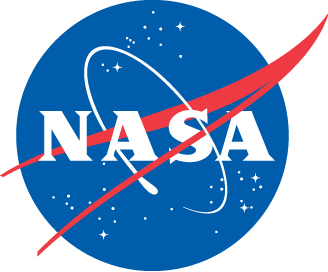Volcanoes and Global Climate Change
About This Module
Topics: volcanoes, volcanic gases, eruptions, climate change, greenhouse effect
Grade Levels: 5-8
Scenario
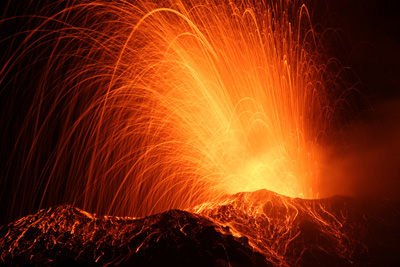
Eruption of Mt. Stromboli, Italy
Volcanoes are the most dramatic and rapid agents of geologic change. An erupting volcano can eject vast amounts of ash and gases into the atmosphere, and cover the ground with tons of lava flows and ash. Eruptions create new mountains, and tear down old ones as we watch. Large eruptions are dangerous, sometimes killing tens of thousands of people at one time. But the most extreme impact of eruptions is their affect on Earth’s climate.
Our planet’s climate results from a complex and always changing mixture of processes and events. The basic source of energy is radiation from the Sun. The incoming radiation interacts with the Earth’s atmosphere and surface, so that changes to either can affect the climate. For example, a dark lava flow absorbs more of the solar energy than a desert soil, so a large enough lava flow could warm a local region. But a much larger influence on climate comes from volcanic gases erupted into the atmosphere that spread out and encircle the planet.
The most abundant gas typically erupted is water vapor, which has been measured to be as high as 97% of gases erupted from some volcanoes. The water has very little impact on climate because it usually rains out of the atmosphere fairly quickly. In fact, it is very common to find volcanic ash deposited that preserve rainfall splash marks.

1991 Eruption of Mount Pinatubo, Philippines
The greenhouse gas carbon dioxide (CO2) is the second most common gas (varying from 1% to 50% in different types of eruptions). Carbon dioxide is heavier than air and commonly ponds in low-lying areas; it can poison and kill animals that breathe it. The CO2 does not significant influence climate because volcanic CO2 is only about 1% of what is released by burning of fossil fuels.
The gas that does have a noticeable climate impact is sulfur dioxide (SO2). Unlike greenhouse gases, SO2 cools the atmosphere. Magma contains a small amount of SO2, typically less than 10% by volume. Large eruptions thrust the SO2 into the upper atmosphere (the stratosphere) where it is transported around the planet. Contact with abundant water changes the SO2 gas into sulfuric acid (H2SO4) droplets called aerosols. Even though they are microscopic, there are billions of such aerosols following a big eruption, so that they actually affect the climate. Each aerosol absorbs some of the radiation from the Sun, and thus heats itself and the surrounding stratosphere. But each ray of Sunlight that hits an aerosol does not strike the Earth, robbing the surface of that small amount of heat. During the 1900s there were three large eruptions that caused the entire planet to cool down by as much as 1°C. Volcanic coolings persist for only 2 to 3 years because the aerosols ultimately fall out of the stratosphere and enter the lower atmosphere where rain and wind quickly disperse them.
Although scientists understand the basic mechanism of cooling due to eruptions there are many details still to be investigated. Here are some questions for you to consider:
- Not all volcanic eruptions seem to effect climate. What are the characteristics, other than bigness, of those that do?
- How can geologists predict which volcanoes are likely to impact the climate when they erupt?
- What would be the climate effect if a series of large eruptions occurred over 10 years?
For further information:
Volcanic Gases and Climate Change Overview Volcanic Gases and Climate Change Overview (U.S. Geological Survey)
http://volcanoes.usgs.gov/hazards/gas/climate.php
Volcanic Gases and Their Effects (U.S. Geological Survey)
http://volcanoes.usgs.gov/hazards/gas/index.php
Task
Keely sat in the airport terminal waiting for the announcement that their plane could finally take off. Flights had been canceled due to a volcano eruption, for pete’s sake! She and her family had been sitting around now for 2 days, sleeping on the floor, washing off in the bathroom sinks, and eating at fast food stands.
They weren’t alone, of course. There were many people at the airport—all stuck in the same situation. The volcano wasn’t even near the airport! Surely, it would be safe to start flying again soon!
Another family moved to seats near Keely and she started a conversation with a boy that looked to be about her age just to relieve the boredom. They started talking about the volcanic ash that was delaying their trip. Jake said that his father had explained that even though the volcanic eruption had occurred thousands of miles away, it had thrown the ash high into the atmosphere and wind currents were carrying the ash around the world. Flights in the path of the ash had to be canceled or delayed for safety reasons.
Keely had heard the same explanation from her parents so she agreed with Jake until he started to talk about what else his parents had told him. They had also explained that erupting volcanoes had other far-reaching and more serious effects than just delaying air flights. Volcanoes emitted gases, such as carbon dioxide and sulfur dioxide that absorb energy from sunlight and raise Earth’s temperatures. Jake said that he learned in school that Earth’s temperatures have been rising. His parents had also told him that volcanoes with greenhouse gases are just one of the factors that increase Earth’s global temperatures. Jake didn’t like cold temperatures so he didn’t think that sounded that bad until his parents added that increasing global temperatures are linked to severe weather events, ice cap melting, and sea level rise. Jake took it a lot more seriously after hearing all that.
Keely told Jake that her parents had discussed the volcanic eruption with her as well. But they said that volcanic eruptions lower global temperatures! Her parents had explained that active volcanoes emit particles that can block sunlight and therefore lower temperatures.
Both opinions made sense and both were based on the science of volcanoes and eruptions.
Who is correct? Keely or Jake? Do volcanoes increase or decrease temperatures on Earth? Do volcanoes cause climate changes?
Sample Rubrics
The developing rubrics page in the Problem Based Learning section provides a content-specific rubric for the Volcanoes module under the Sample Rubrics heading.
Skill Building Activities
Tropical Atlantic Aerosols
http://mynasadata.larc.nasa.gov/lesson-plans/?page_id=474?&passid=56
(Right) Image courtesy NASA Visible Earth
Purpose: Students will use real satellite data to determine where the greatest concentrations of aerosols are located during the course of a year in the tropical Atlantic region and their source of origin.
Grade level: 8
Estimate Time for Completing Activity: 50 minutes
Learning outcomes:
- Students will explore data and draw conclusions about aerosol transport.
- Students will learn about the radiation budget effects of aerosols.
- Students will consider explanations linking tropical Atlantic aerosols to Atlantic hurricane strength.
Using My NASA Data to Determine Volcanic Activity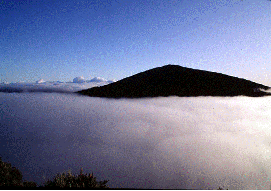
http://mynasadata.larc.nasa.gov/lesson-plans/?page_id=474?&passid=40
(Right) Image courtesy Vulcani and Vulcani Online
Purpose: Students will use MASA satellite data of optical depth as a tool to determine volcanic activity on Reunion Island during 2000-2001.
Grade level: 8-12
Estimated time: One 50-minute class period
Learning outcomes:
- Understand how aerosols are used in science to indicate volcanic activity
- Understand how biomass burning affects global aerosol activity
- Access data and import into MS Excel
- Use graphical data to make inferences and draw conclusions
Science Project: What Color Is Your Sky?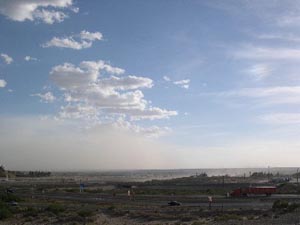
http://mynasadata.larc.nasa.gov/what-color-is-your-sky/
(Right) Image courtesy Forrest M. Mims III
Purpose: Students will learn about characteristics of the sky they see every day. The activity will explain why the sky is not always blue and will provide some ideas for science projects that will give students a better appreciation of the sky.
Age range: 11 years to adult
Estimated time: You can learn the basic facts about sky color in half an hour. You can then enhance your knowledge by observing the sky every time you have the opportunity. You can share with family members and friends what you have learned about sky color while looking out a window or walking outside. And you can teach students the basic facts about sky color in two brief sessions of 5 to 10 minutes each. For best results one session should be indoors and the other outdoors or in a room with a window or windows having an unobstructed view of the sky. For best results spend time with your students so they can more fully appreciate, understand, and discuss the appearance and color of the sky.
Sky Color for Kids 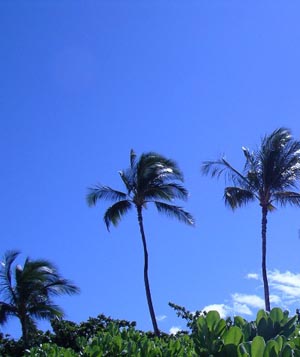
http://mynasadata.larc.nasa.gov/804-2/sky-color-for-kids/
(Right) Image courtesy Forrest M. Mims III
Purpose: Students will be introduced to the colors of the sky and will learn why the sky has such a wide range of colors.
Age range: 6-10 years
Estimated time: You can teach children just the basic facts about sky color in two brief sessions of about 10 minutes each. For more understanding spend some time observing the sky and looking into why sky colors change with your students.
Learning Objectives
Alignment of Learning Objectives and Standards - Volcanoes and Climate Change
|
National Science Content Standard Grades 5-8 |
West Virginia State Science Standard Grades 5-8 |
||
|
Apply research skills to locate relevant data on an environmental issue. |
|
A—Science as Inquiry
|
CS: 1—Nature of Science
|
|
Use scientific data to support a position on volcanoes as an environmental issue. |
2a
|
A—Science as Inquiry
|
CS: 1—Nature of Science CS: 3—Application of Science |
|
Know the differences among global climate change, global warming, and weather. |
2a 4a 4b 4c |
|
CS: 2—Content of Science |
|
Analyze data to identify trends occurring in volcanic eruptions and global climate change and weather impacts. |
2c |
C—Earth’s History
|
CS: 1—Nature of Science CS: 3—Application of Science |
|
Use scientific data to support a position on volcanic eruptions as an environmental issue.
|
2c |
A—Science as Inquiry
|
CS: 1—Nature of Science CS: 3—Application of Science
|
|
Describe the different types of volcanoes. |
|
D—Earth and Space Science
|
CS: 2—Content of Science |
|
Relate the compositions of volcanoes with structure, type, and eruption. |
|
D—Earth and Space Science
|
CS: 2—Content of Science |
|
Use satellite data to identify volcanoes that might have caused weather or climate effects. |
2c 2e |
|
CS: 1—Nature of Science CS: 3—Application of Science
|
|
List types of gases emitted by a volcano and explain their possible impacts on global climate change and/or weather patterns. |
2c 2e |
B—Physical Science
|
CS: 2—Content of Science |
|
Explain possible human consequences of volcanic eruptions, including how volcanic eruptions affect weather and climate change. |
3c |
F—Science in Personal and Social Perspectives |
CS: 3—Application of Science |
|
Describe the layers of Earth’s atmosphere and how characteristics of the layers affect volcanic ash and resulting weather effects. |
1a 1b 1e |
D—Earth and Space Science
|
CS: 2—Content of Science |
Featured Data
Layers of Earth's Atmosphere

Exosphere—contains few particles that move into and from space.
Exobase—the lower boundary of the exosphere.
Thermosphere—temperature increases with height. Temperatures can rise to 1,500 degrees Celsius, but it would not feel warm because of the low air pressure in this layer. The International Space Station orbits Earth in this layer.
Ionosphere—overlaps several layers, but extends to approximately 1,000 km (620 miles) upward to the upper thermosphere. Ionized by solar radiation, this layer affects radio waves on Earth and is responsible for the auroras.
Mesopause—the boundary between the mesosphere and the thermosphere; the coldest place on Earth.
Mesosphere—the layer in which most meteors burn up after entering Earth’s atmosphere and before reaching Earth’s surface.
Stratopause—the boundary between the mesophere and stratosphere.
Stratosphere—contains the ozone layer.
Tropopause—the boundary between the stratosphere and troposphere
Troposphere—the layer closest to Earth’s surface in which all weather occurs.
Resources
NASA Earth Observatory
http://earthobservatory.nasa.gov/NaturalHazards/category.php?cat_id=12
Great resource for information on volcanoes and earthquakes with stunning images of volcanoes and eruptions.
Climate Kids: Eyes on Earth: NASA’s Eyes on Earth
http://climate.nasa.gov/kids/bigQuestions/findOut/
Great student-friendly site with lots of information and interactive features on climate change.
National Geographic
http://www.nationalgeographic.com/eye/volcanoes/volcanoes.html
Nature’s Fury site for volcanoes with links to classroom ideas, eye in the sky news, history of satellites, and more.
Anneberg Interactives: Volcanoes: Can We Predict Volcanic Eruptions?
http://www.learner.org/interactives/volcanoes/entry.html
Easy to read information videoclips on melting rocks, plate tectonics, and volcanic eruptions.
Discovery Kids: Volcano
http://kids.discovery.com/games/build-play/volcano-explorer
Student-friendly format includes information about plate tectonics, the ring of fire, types of volcanoes, and a virtual volcano option where students can build their own volcano and watch it erupt.
National Geographic Videos: Volcanoes
http://video.nationalgeographic.com/video/player/environment/environment-natural-disasters/volcanoes/volcano-lava.html
Many stunning videos of lava flows, eruptions, and different types of volcanoes around the world.
Discovery Channel Videos
http://dsc.discovery.com/videos/volcano-video/
A playlist of videos showing volcanic eruptions, plate tectonics clips, lava flow videos, underwater volcanoes, the ring of fire, and more.
Weather Whiz Kids: Volcanoes
http://www.weatherwizkids.com/weather-volcano.htm
Lots of information on types of volcanoes and eruptions.
National Geographic: Quiz Your Noodle: Volcanoes
http://kids.nationalgeographic.com/kids/games/puzzlesquizzes/quizyournoodle-volcanoes/
Students take a fun, interactive quiz to test their knowledge of volcanoes. The quiz gives them feedback with each question.
Volcano World
http://volcano.oregonstate.edu/oldroot/volcanoes/alpha.html
Links to sites for students and teachers. Also has a list of volcanoes of the world that can be used if students need practice plotting latitude and longitude. The volcanoes can be mapped according to type which is also listed on the table.
USGS—Volcano Hazards Program
http://volcanoes.usgs.gov/
U.S. volcanoes and activity alerts, hazards programs, clickable map with volcano locations, webcam reports, videoclips, photoglossary, and more.
Savage Earth Animation of Earth’s Layers and Movements
http://www.pbs.org/wnet/savageearth/animations/hellscrust/main.html
USGS: Volcanic Ash: What It Can Do and How to Prevent Damage
http://volcanoes.usgs.gov/ash/index.html
Information on volcanic ash and aerosols with printable brochures.
National Geographic Videos: Volcanoes 101
http://video.nationalgeographic.com/video/player/kids/forces-of-nature-kids/volcanoes-101-kids.html
Great video of erupting volcanoes and with narration explaining features and types of volcanoes with examples.
Links to Volcano Observatories
Alaskan Observatory
http://avo.alaska.edu/
USGS-Casades Volcanoes Observatory
http://vulcan.wr.usgs.gov/
Hawaiian Volcano Observatory
http://hvo.wr.usgs.gov/
Yellowstone Volcano Observatory
http://volcanoes.usgs.gov/yvo/

